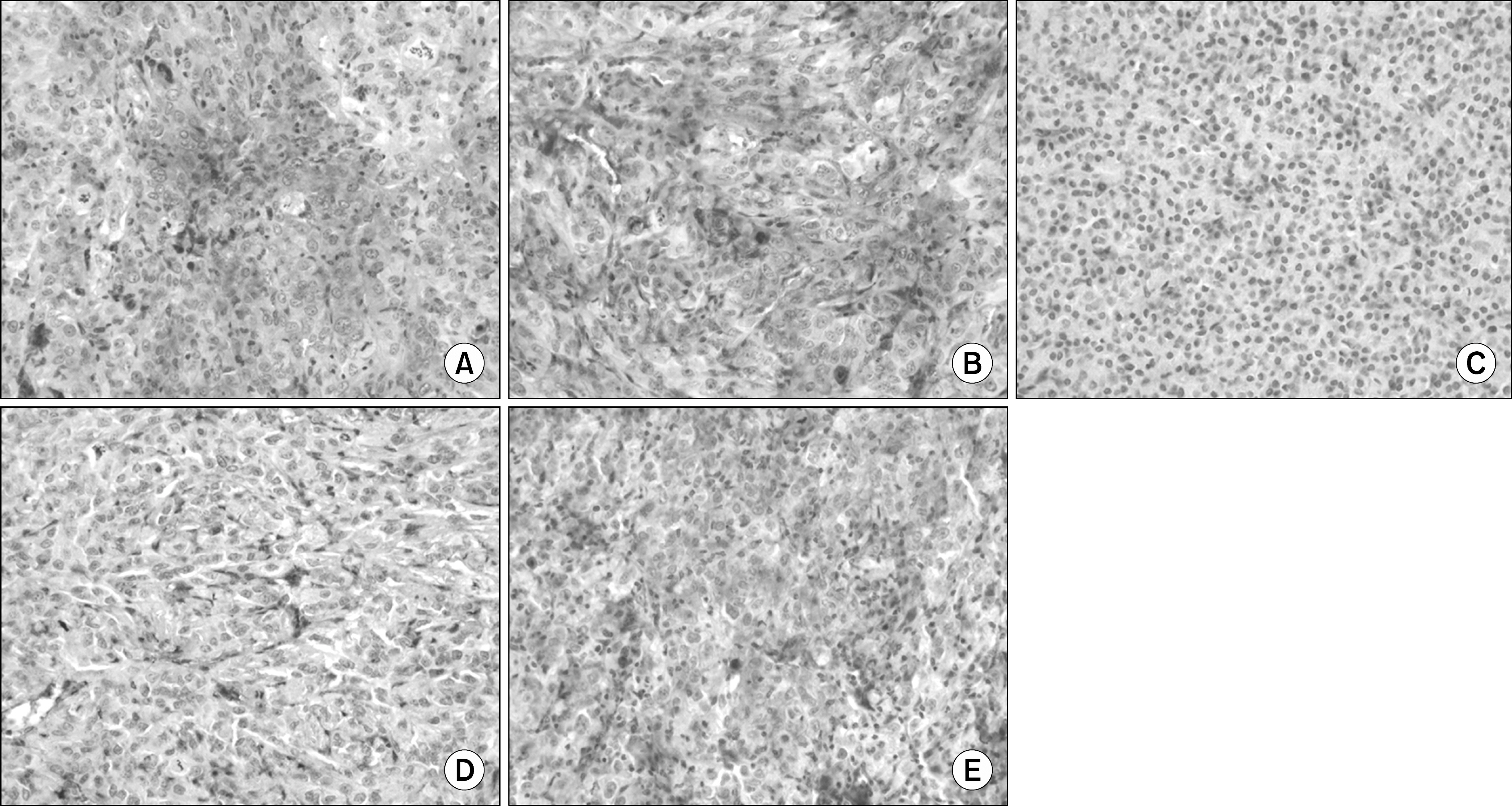Korean J Endocr Surg.
2011 Dec;11(4):234-241. 10.0000/kjes.2011.11.4.234.
Sonic Hedgehog Protein Expression in Various Thyroid Tissues and Its Clinical Implication
- Affiliations
-
- 1Department of Surgery, Chungbuk National University College of Medicine, Cheongju, Korea. webjwpark@chungbuk.ac.kr
- 2Department of Pathology, Chungbuk National University College of Medicine, Cheongju, Korea.
- 3Department of Urology, Chungbuk National University College of Medicine, Cheongju, Korea.
- 4Department of Surgery, University of California, San Francisco, USA.
- KMID: 2375383
- DOI: http://doi.org/10.0000/kjes.2011.11.4.234
Abstract
- PURPOSE
The Hedgehog (Hh) signaling pathway is important in embryonic development including cell differentiation and proliferation. Recently, activation of this pathway has been implicated in several forms of solid cancers. We investigated sonic hedgehog (Shh) protein expression and its relation to differentiation and clinicopathologic characteristics in thyroid cancer cell lines and tissues.
METHODS
FTC-236, FTC-238, and XTC-1. We made tissue microarray slides using 80 thyroid surgical specimen: 40 benign and 40 malignant lesions. Immunohistochemical staining was performed using anti-Shh antibody. mRNA expression of NIS, thyroglobulin, and CD97 were evaluated by RT-PCR. Cyclopamine was used as a Shh signal inhibitor.
RESULTS
Shh expression was more prominent in TPC-1, FTC-133, and XTC-1 cell lines than the others. Cyclopamine downregulated CD97 and upregulated thyroglobulin mRNA expression, but did not induce mRNA expression of NIS. Thyroid tissues showed varied expression of Shh in both benign and malignant diseases. Shh expression was detected in 38 of 50 (76%) normal, in 18 of 25 (72%) non-neoplastic benign, in nine of 15 (60%) benign tumors, and in 31 of 40 (77%) malignant tumors. Shh over-expression was significantly less frequent in papillary thyroid carcinomas than in normal or benign thyroid tissues. In addition, Shh protein expression did not relate to clinicopathologic characteristics in papillary thyroid carcinomas.
CONCLUSION
Thyroid tissues and cell lines vary in expression of Shh. Cyclopamine can induce redifferentiation in thyroid cancer cell lines. Shh protein expression, however, is unrelated to clinicopathologic characteristics in papillary thyroid carcinomas.
Keyword
MeSH Terms
Figure
- Full Text Links
- Actions
-
Cited
- CITED
-
- Close
- Share
- Similar articles
-
- Sonic Hedgehog Expression in Colorectal Neoplasms
- Hedgehog Related Protein Expression in Breast Cancer: Gli-2 Is Associated with Poor Overall Survival
- Calcification and Expression of Bone Morphogenetic Protein-4 in Papillary Thyroid Carcinoma
- Expression of Hedgehog Proteins in Periampullary Cancer
- Expressions of Id-1 and Id-2 in Hyperplastic Thyroid Tissue and Thyroid Carcinoma




